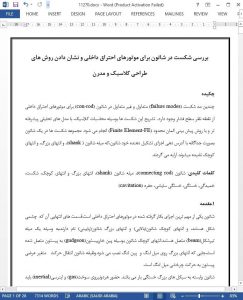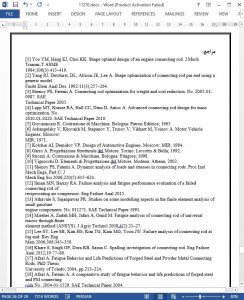Abstract
Several typical and uncommon failure modes in con-rods for internal combustion engines are commented from the stress level viewpoint. The interpretation of the fractures is supported with traditional calculations, with more advanced analytical models, and with Finite Element (FE) predictions. The repertoire of failures in a con-rod is presented by separately addressing the parts composing the con-rod itself, namely the shank, and the small and big ends.
1. Introduction
The connecting rod is one of the most important components employed in internal combustion engines. Its extremities are shaped as eyes, named con-rod small end (upper) and con-rod big end (lower), connected by a beam-like shank. The small end of the connecting rod is joined to the piston by means of the gudgeon pin, whereas the big end is mounted on the crank-pin of the crankshaft. The function of the connecting rod is to translate the alternating transverse motion of the piston to the rotational motion of the crankshaft.
6. Conclusions
Both typical and uncommon failure modes in con-rods for internal combustion engines have been commented from the stress level viewpoint. The interpretation of the fractures has been supported with traditional calculations, with more advanced analytical models, and with FE predictions. The locations of the most critical con-rod sections examined in this paper are summarized in Fig. 1. With reference to the con-rod shank, the fatigue cracks occurring at the transition zone between the small end and the shank have been considered, and the corresponding stress concentrations have been illustrated with a FE analysis. Examples of side buckling, of front-rear buckling, and of plastic torque of the con-rod shank, have been presented, and their possible causes have been explored. The occurrence of an unusual 45° fatigue crack in the con-rod shank has been justified. An uncommon fatigue crack, splitting the whole con-rod into two parts, has been detailed, and the tensile stresses promoting such crack have been attributed to a non traditional geometry of the eye-shank transition zone. The influence of the I-shaped and H-shaped shank geometries on the pressure peaks at the contact between the gudgeon pin and the small end bore has been illustrated with FE.











